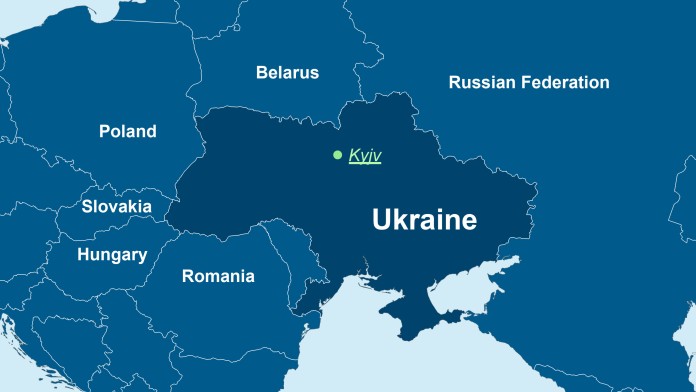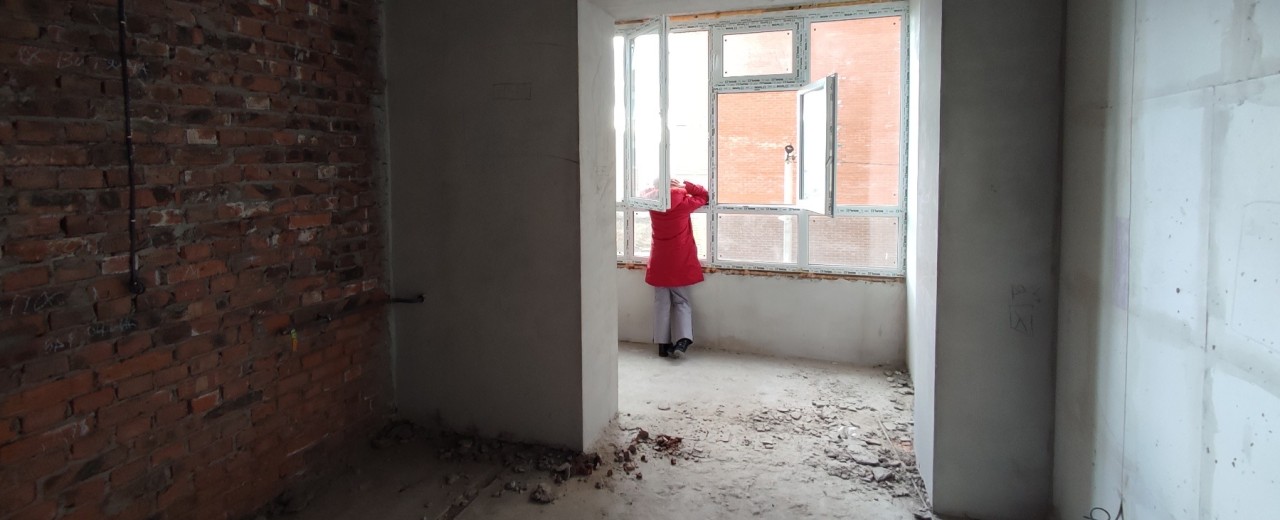
As of: 03/2024
Russia’s war against Ukraine, which has been ongoing since 2022, is presenting the country with major challenges. Almost four million people are currently refugees within Ukraine and in urgent need of new housing. However, there is also often a lack of suitable, affordable housing in the host communities. Therefore, KfW, commissioned by the German Federal government, is supporting Ukraine in creating housing for internally displaced persons with more than EUR 170 million.
From as early as 2014 with the start of the warfare and the Russian annexation of Ukrainian territories that was not recognised under international law, several million people had been fleeing the east and south of Ukraine into the west of the country. Since the start of Russia’s war of aggression in Ukraine in 2022, even more people have been fleeing within the country. These people need suitable housing that allows them to live in safety and dignity. However, such accommodation is in short supply: according to international estimates, about 10% of homes in Ukraine have been damaged or destroyed as a result of the war. The situation of many people who did not have to leave their homes is also precarious, as many buildings have been destroyed or are in a poor condition. Due to the difficult economic situation of many Ukrainians – in particular internally displaced people – affordable housing is needed above all.

KfW is promoting housing for internally displaced people in Ukraine through four programmes with both governmental and non-governmental institutions. These are tailored to internally displaced people's different needs. On the one hand, existing buildings are being energy-efficiently renovated and refurbished, and on the other hand, housing is being financed.
Since 2014, KfW, commissioned by the Federal Ministry for Economic Cooperation and Development (BMZ), has been supporting the promotion of housing for internally displaced people with EUR 33.2 million through the project-executing agency “Ukrainian Social Investment Fund (USIF)”. The programme will renovate homes for internally displaced families in an energy-efficient manner, and the option of constructing new buildings is currently being examined.
Projects with the International Organization for Migration (IOM) follow a similar approach. KfW is supporting these with EUR 94 million. Additional accommodation is being created by repairing or converting existing properties as well as constructing prefabricated buildings.
Through the Norwegian Refugee Council’s “Supporting Solutions” project, KfW is providing a further EUR 2.1 million for housing for people affected by the conflict. In addition to the rehabilitation of housing, legal assistance is also being provided for internally displaced people.
KfW is also providing EUR 42.5 million for a State Fund for Support of Youth Housing Construction (SFYH) promotional programme. This is being implemented in cooperation with the Ministry for the Reintegration of Temporarily Occupied Areas (MinReintegration). The aim of the project is to enable internally displaced people and their families to purchase homes by offering subsidised housing loans.
It is expected that the housing situation in Ukraine will further deteriorate as the war continues. The housing programmes promoted by KfW contribute to ensuring that people affected by war and displacement in Ukraine have an adequate home that gives them a certain degree of stability, at least in their personal spheres. They also contribute to making more affordable municipal housing available in the long term.
In cooperation with the USIF, housing has been created for internally displaced families by energy-efficiently renovating 27 buildings. Around 1,000 people are benefitting from this. Eight other sites are currently being developed to create housing for 800 internally displaced people.
The project, which is being implemented by the IOM, aims to create up to 2,400 housing units for internally displaced and returning people.
In cooperation with the Norwegian Refugee Council (NRC), over 1,500 people are being helped to repair damage to their homes.
In addition, 660 housing loans have been granted through the SFYH so far, which are benefitting around 1,500 internally displaced people.
The project contributes to the achievement of these following United Nations Sustainable Development Goals:
KfW Group
KfW Development Bank
Lorenz Gessner
Head of KfW’s Ukraine/Moldova representative office
Share page
To share the content of this page with your network, click on one of the icons below.
Note on data protection: When you share content, your personal data is transferred to the selected network.
Data protection
Alternatively, you can also copy the short link: https://www.kfw-entwicklungsbank.de/s/enzBY1_r
Copy link Link copied